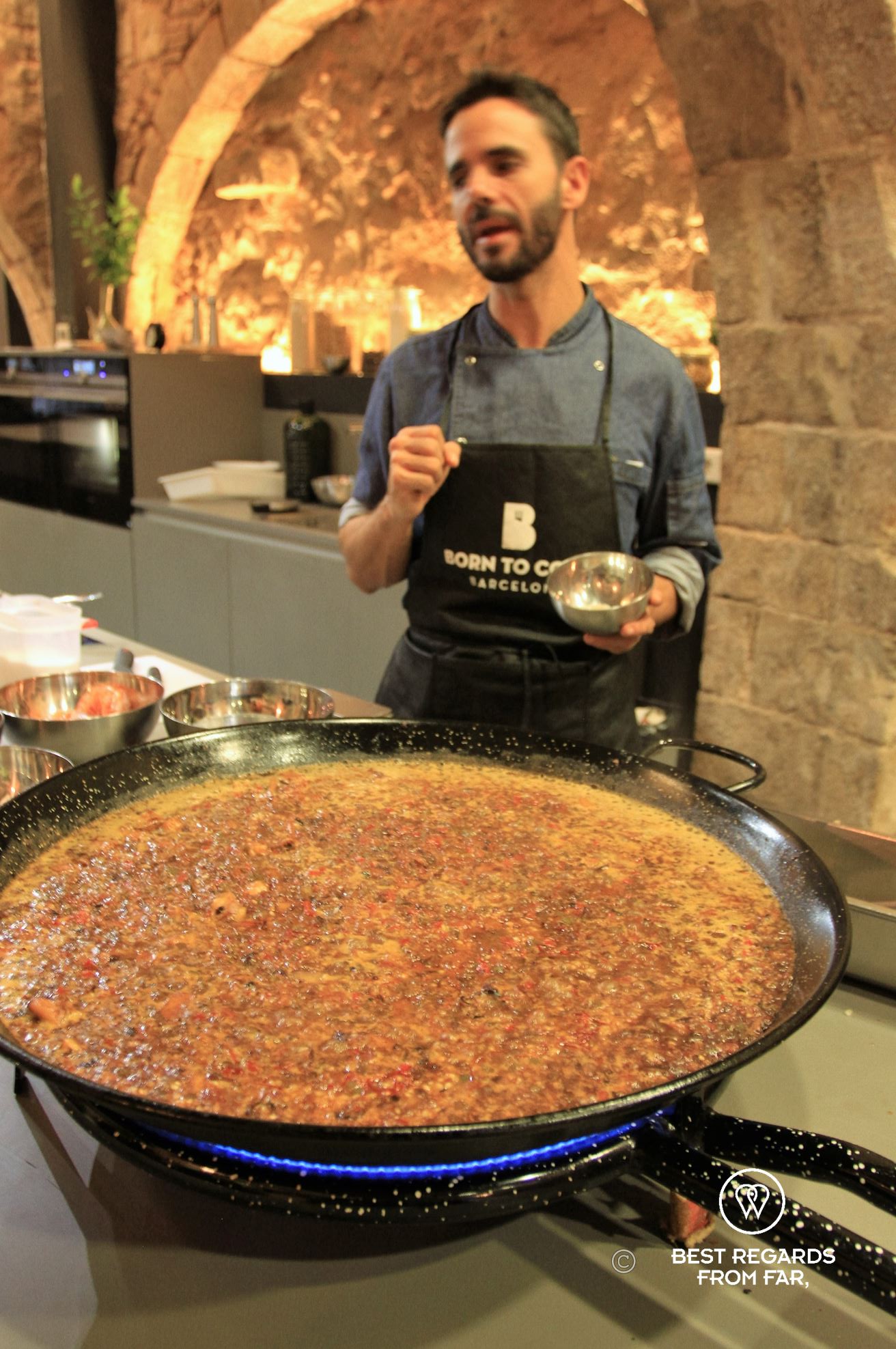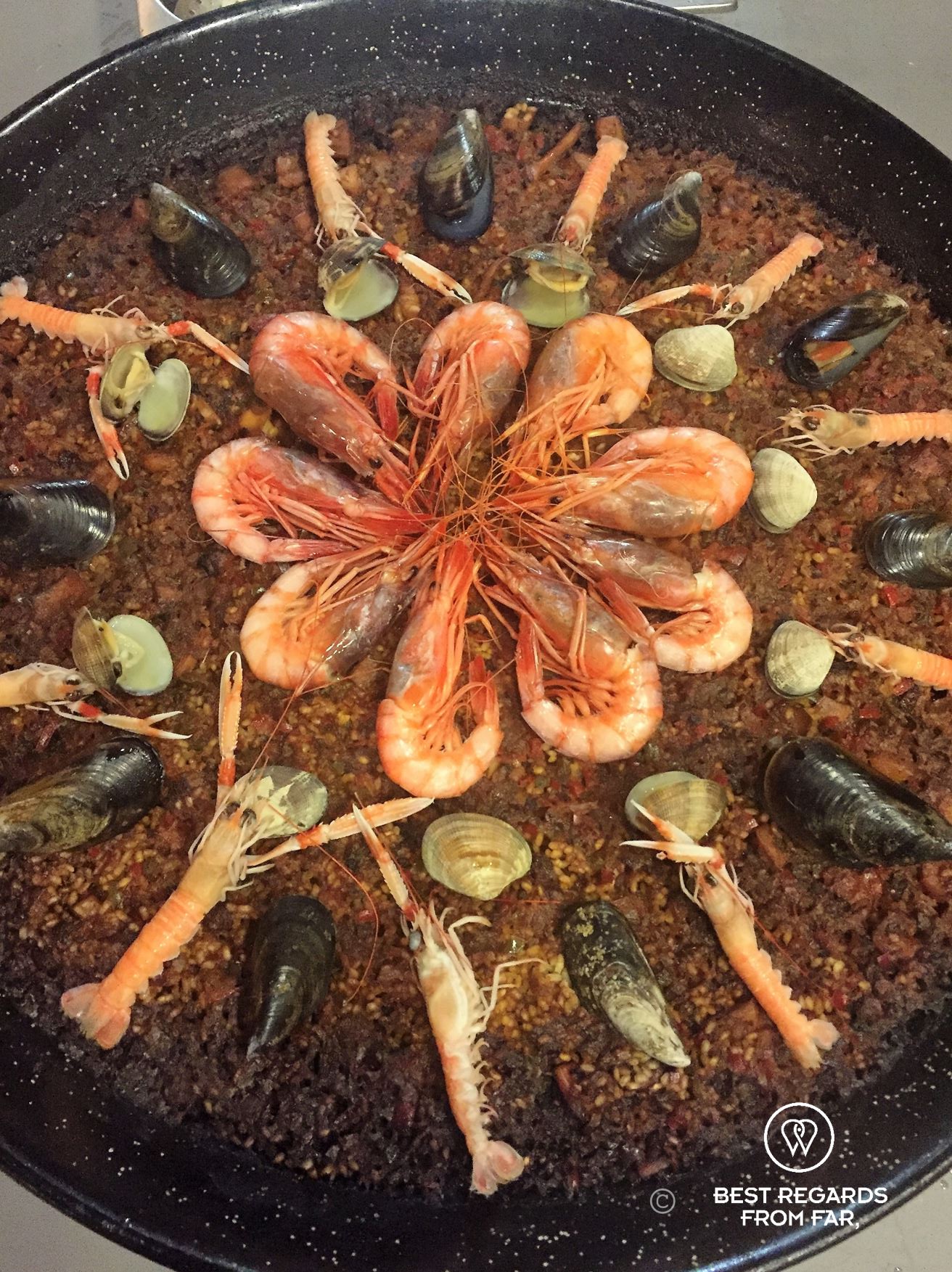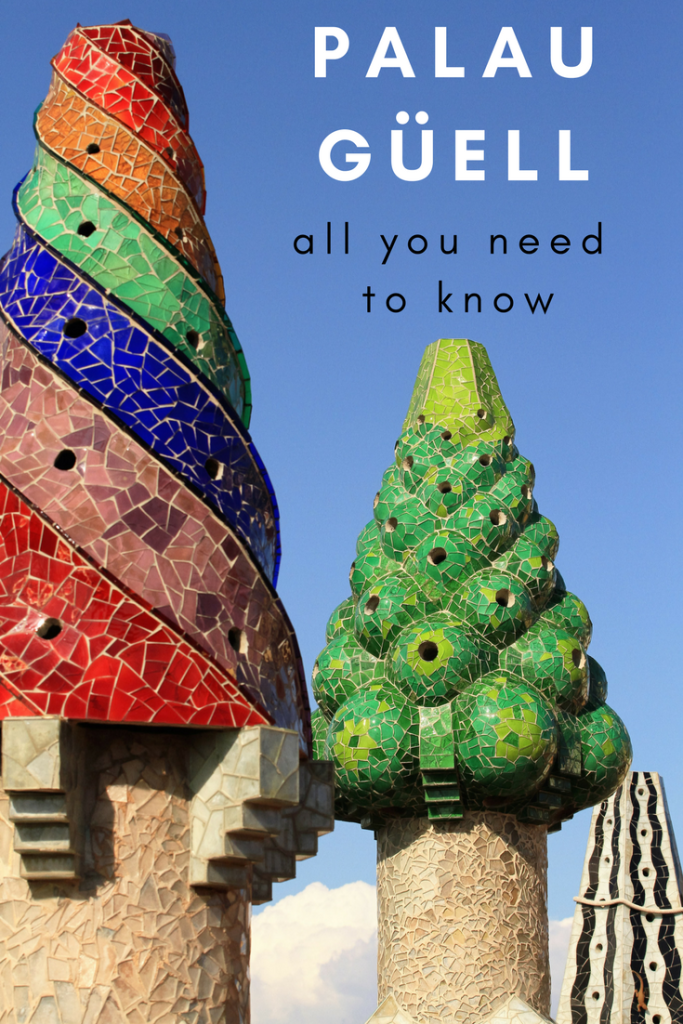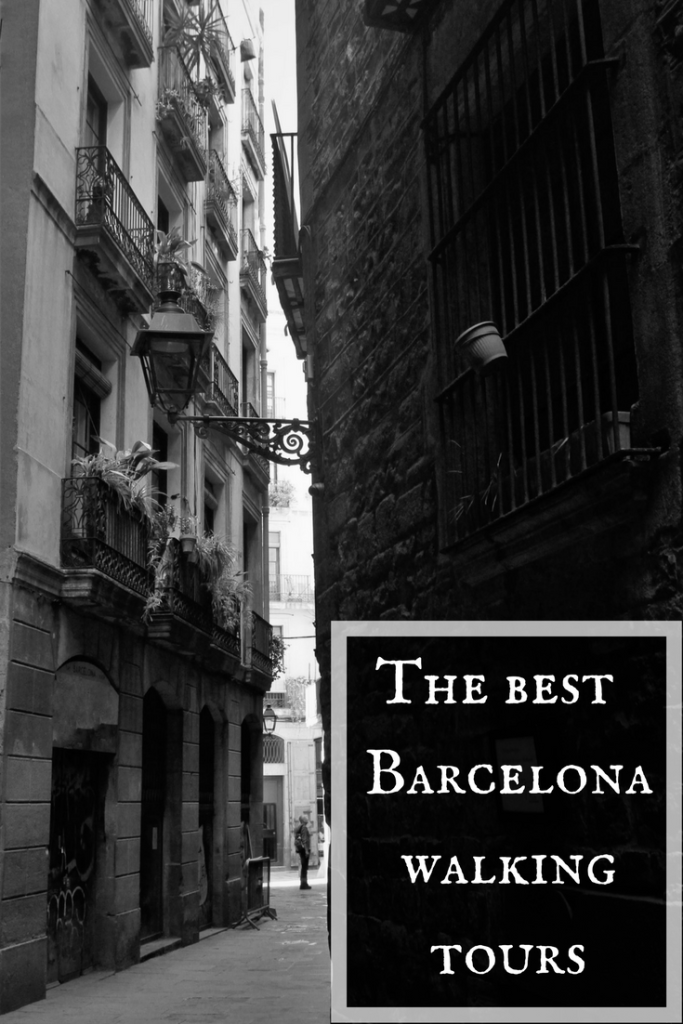Text: Marcella van Alphen
Photographs: Claire Lessiau& Marcella van Alphen
Do you know how to recognise a real paella from the ones that are sold to most tourists throughout Barcelona? Do you know that most of the olive oil in the world is produced in Spain and bottled in other countries to be sold as such? That there are 28 different protected Spanish cheeses recognized over the world? That gazpacho is traditionally a cold soup made by farmers with left over vegetables? That the delicious crema Catalana has a world-famous French twin sister? Join us for this tasty experience in the booming El Born district of Barcelona!
Market tour
Ingredients are key to any good recipe. Before starting to cut, peel, cook and more, chef Oriol proudly takes us through the neat stalls of the Santa Caterina market in the heart of Barcelona. A good alternative to the very touristy La Boqueria, this 1848 market has been renovated in 1997 with a colourful rooftop, a metaphoric sea of fruits and vegetables. One of the most vibrant markets of Barcelona, a mix of locals and tourists roam the alleys. An old lady drags her trolley behind her while she hand-picks some colourful Spanish tomatoes ranging from yellow to red and green to orange and dark red. “The tomatoes that are both red and green are the best ones”, Oriol explains as we taste some. They are all delicious. Each tomato has its own specific structure and sweetness, a true treat compared to their family members grown in greenhouses or off-ground.



The young Catalan chef motions towards the cured ham and cheese section. Proud of the Spanish cheeses and cold cuts, he warns us about extensive farming that seems to be taking over. Iberian pigs should be raised in meadows and fed with oaks for the best taste. The butcher presents slices of chorizo to us, in which various meats were carefully marinated with garlic and pepper to produce the best quality chorizo, not too spicy to not overpower the high quality meat.
Across the alley way, a wide variety of freshly caught fish, crabs, oysters, lobsters, shrimps, cuttlefish and many more seafood is displayed. Oriol buys the key ingredients for the main dish we will be cooking: langoustines, mussels, cuttlefish, shrimps and squid.
Loaded with our ingredients, we are leaving the colourful market behind and making our way through the typical narrow streets of El Born district lined up with houses dating back to the late medieval times. In this maze of picturesque alleys, we enter an atmospheric house that was once owned by no less than Christopher Columbus. Passed its heavy wooden door, the vast and professional kitchen of Born to Cook is surrounded by a stunning brick and beam decor in which we are going to explore the Mediterranean cuisine.



While sipping a Spanish Cava, we carefully listen to Oriol’s explanations about how to obtain the perfect gazpacho, patatas bravas, baked onion carpaccio with Xató sauce and a Catalan cream (the twin sister of the French crème brûlée) and before we know it we find ourselves, blending, sautéing, frying, stirring, measuring and chopping the ingredients with great smoothness thanks to Oriol’s tips and tricks.
Patatas Bravas
Being from the Netherlands, I’ve had my fair share of potatoes prepared in different ways and I am specifically interested in the secrets of how to cook the Patatas Bravas. Oriol explains: ” You cut the potatoes in small cubes. As all nutrients dilute in water you don’t want to boil them in water. Instead we poach them in sunflower oil and let them boil in the oil for 30 minutes. This way they keep their flavour. For the sauce we put olive oil, minced garlic, a few hot chili peppers sliced in half and a few sliced onions in a pan on medium heat. When the garlic is brown you add graded tomatoes (to not have seeds nor skin) and let it simmer.”

Baked onion carpaccio with Xató sauce
In the meantime, Claire focusses on blending sun-dried pepper paste, vinegar, olive oil, nuts, pepper, and salt with a juice coming from the onions that have just spent enough time in the oven to obtain the perfect sweetness and texture. She is making the Catalan Xató sauce to accompany the soft onion carpaccio served with salty anchovies.

Traditional seafood paella!
Originating in Valencia, paella dates back to the cultivation of rice by the Moors during their occupation of Spain, and blended centuries later with the utensils brought by the Romans.
A mix of mouth-watering smells fill the former house of Christopher Columbus. In one of the largest pans I’ve ever seen, the seafood paella is gradually taking shape; the onions are nicely caramelised and de-glazed with white wine, the squid and cuttlefish have obtained the right texture after 40 minutes of cooking, diced peppers have been added, and when they are caramelized the tomatoes can be thrown in. It takes a while for the ingredients to reduce, and eventually the rice, fish stock, salt and precious saffron are added. “Careful!” Oriol announces. “A real paella is never yellow!! Unfortunately you see many of yellow paellas as cheap turmeric is used to replace the expensive saffron, and they are just fast cooked and not caramelised. It’s a very common tourist trap here in Spain!” The paella starts to sing. The last touch is to arrange the langoustines and shrimps and lower the heat.





Crema Catalana
After preparing the cinnamon and orange and lemon zest infused custard, caramelising it with a glowing red iron is just hilarious as unexpected flames and smoke startle the learning chefs!


Tasting
Accompanied by a good glass of Spanish wine we savour the dishes we have just cooked at a nicely set table in this medieval decor. Enjoying this food discovery, sharing it with new friends we have just made during the market tour and hands-on cooking class is a very rewarding way of exploring the best Spanish ingredients and dishes in the historical district of Barcelona.

Travel tips:
- To explore the Spanish cuisine to the fullest check out the cooking school Born to Cook and make sure to book ahead to save your spot!
- Check out this interactive map for the specific details to help you plan your trip and more articles and photos (zoom out) about the area! Here is a short tutorial to download it.
Like it? Pin it!

For more in Barcelona:







Oh yes, ingredients are extremely important. And when we lived in Amsterdam, we always buy from the Spanish grocer at the Albert cuyp market!
Oh yes, you really don’t want those Dutch tomatoes 😱 😉
That’s true, but they do have specific use too. Such as the local stampot dish.
A very mouth-watering post! 😉 And thank you for showing us how to recognise an authentic plate of Paella.
Thanks Len 🙂
What a fantastic article! Great pictures. Spain is an eventual destination for us, and it’s pieces like this that speeds up the timetable. Had no idea about cheap paella, great tip. Thanks for sharing!
Thank you very much girls! Hope you make it very soon to Spain!